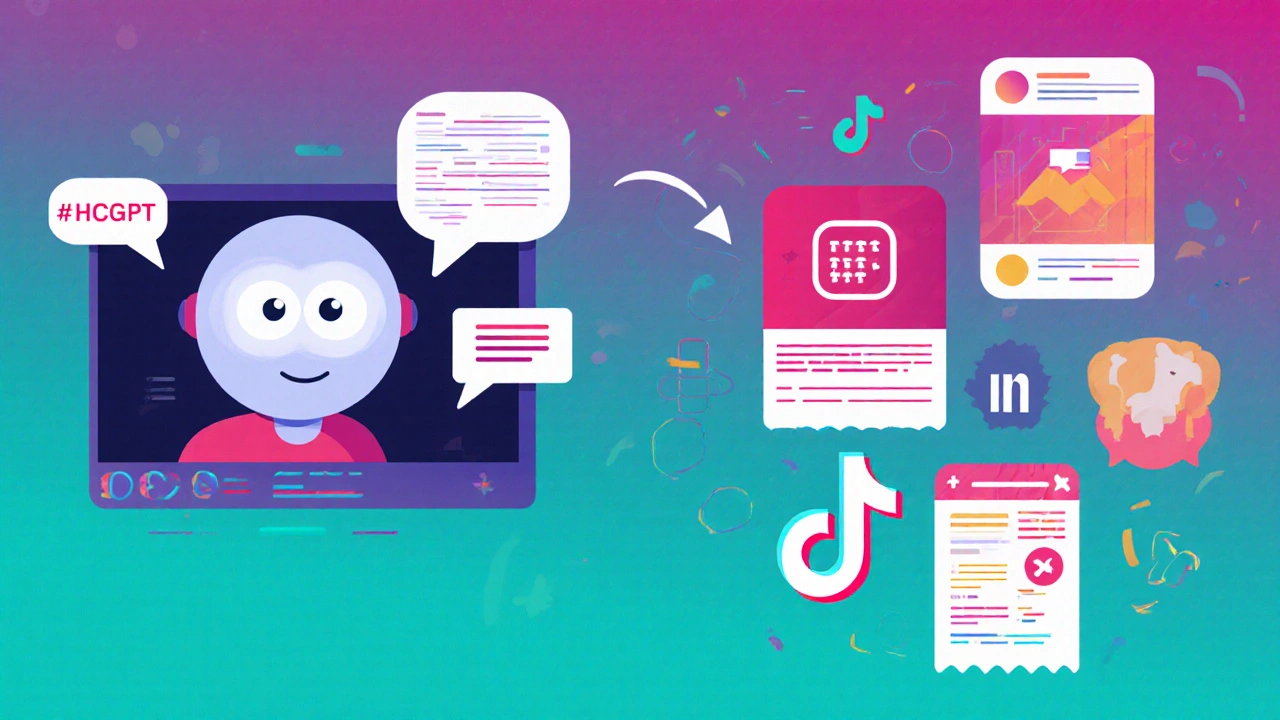ChatGPT's Impact on Social Media Marketing

Social Media Content Generator
Generated Content
Your generated content will appear here...
Marketers are constantly hunting for tools that can cut down production time while still delivering eye‑catching posts. Enter ChatGPT, a large language model from OpenAI that can write, edit, and even converse in real time. When you pair that with the fast‑paced world of Social Media Marketing, the results feel almost magical - higher engagement, faster turnaround, and data‑driven decisions.
Key Takeaways
- ChatGPT can generate platform‑specific copy in seconds, freeing up creative time.
- AI‑driven replies boost audience engagement without sacrificing authenticity.
- Integrating ChatGPT with analytics tools uncovers trends you might miss.
- Use clear prompts and human review to avoid brand‑voice slip‑ups.
- A simple checklist helps you roll out ChatGPT safely across campaigns.
Below, we break down exactly how to harness this AI powerhouse, where it shines, and what to watch out for.
What ChatGPT Is and Why It Matters for Social Media
ChatGPT is an AI Language Model trained on billions of words. Its strength lies in pattern recognition - it can mimic brand tone, suggest hashtags, and answer questions as if a real person wrote them. For Social Media Marketing teams, that means a single prompt can produce a week’s worth of posts, captions, and comment replies.
Turbocharging Content Generation
Creating fresh content daily is a brutal treadmill. ChatGPT can ease that load in three ways:
- Idea brainstorming: Ask the model for trending topics in your niche. For example, "Give me five TikTok trends about sustainable fashion." It returns ready‑to‑use hooks.
- Copy drafting: Feed a short brief - target audience, platform, tone - and let ChatGPT write the caption. It can adapt length for Twitter’s 280‑character limit or Instagram’s longer storytelling style.
- Visual prompting: Pair the generated text with AI image generators (like DALL·E) to produce cohesive visual‑text assets.
Here’s a quick workflow:
- Identify the campaign goal (e.g., promote a new product).
- Write a prompt: "Create three Instagram carousel captions for a tech‑savvy audience, emphasizing speed and eco‑friendliness."
- Review the output, tweak brand‑specific words, and schedule.
Because the model can produce variations instantly, A/B testing becomes a breeze - you can generate dozens of headline options and let data decide the winner.
Boosting Audience Engagement with AI‑Powered Replies
Social platforms reward quick, relevant interactions. ChatGPT can act as a 24/7 Chatbot Automation that answers FAQs, thanks commenters, or even handles mild complaints.
Typical setup:
- Connect the model to your page’s API (many third‑party tools already offer this).
- Define response guidelines - tone, brand phrases, escalation triggers.
- Monitor and fine‑tune based on real conversation logs.
Example prompt for a comment: "User says: 'Love the new headphones! Any discount code?' Generate a friendly reply offering a 10% promo code and a link to the store." ChatGPT returns a concise, on‑brand reply within seconds.
Human oversight is still crucial. Set a confidence threshold; if the model’s answer includes uncertain language, flag it for review. This keeps authenticity high while scaling the workload.

Turning Data Into Insights with Social Media Analytics
Beyond content, ChatGPT can help interpret performance metrics. Feed it a CSV snippet or a summary of engagement rates, and ask for insights:
"Based on these Instagram story swipe‑up rates, which day of the week performed best and why?"
The model can surface patterns like "Posts with user‑generated photos on Tuesdays see a 15% lift" - insights you can act on immediately.
Couple this with native analytics dashboards to create a feedback loop: generate a report, tweak strategy, let ChatGPT draft the next set of posts, and repeat.
Enhancing Influencer Outreach and Ad Copy
When you need to pitch influencers or write ad copy, precision matters. ChatGPT can tailor outreach messages to each creator’s niche while preserving a consistent brand voice.
Sample prompt for influencer outreach:
"Write a short DM to a fitness micro‑influencer, introducing our new vegan protein bar and offering a free sample in exchange for a review. Keep it upbeat and under 150 characters."
For paid ads, ask the model to generate multiple headline‑body pairs, then let your ad platform’s AI‑optimizer select the highest‑performing combinations.
Common Pitfalls and Best‑Practice Tips
Even the most powerful tool can backfire if misused. Here are three traps to avoid:
- Over‑reliance on AI tone: Without a human edit, you risk sounding generic. Always run a brand‑voice checklist.
- Missing context: ChatGPT knows language, not real‑time events. Verify facts before publishing.
- Privacy slips: Never feed personal data or confidential client info into the model.
Best‑practice checklist:
- Define clear prompts and desired output format.
- Run a quick human audit on every batch of AI‑generated copy.
- Set up logging to track AI‑generated vs. human‑generated performance.
- Update prompt library quarterly based on what works best.
Quick Implementation Checklist
- Identify high‑volume content tasks (e.g., daily captions, comment replies).
- Choose a prompt template for each task.
- Integrate ChatGPT via API or a no‑code connector.
- Establish a review workflow (e.g., Slack approval channel).
- Monitor engagement metrics weekly and adjust prompts accordingly.
Comparison of Popular AI Writing Assistants for Social Media
| Feature | ChatGPT | Google Bard | Anthropic Claude |
|---|---|---|---|
| Platform‑specific length limits | Customizable via prompts | Pre‑set for most platforms | Limited fine‑tuning |
| Real‑time comment handling | Supported through API integrations | Beta integration only | Requires third‑party wrapper |
| Analytics summarization | Strong natural‑language interpretation | Good but less granular | Focused on safety, less data‑rich |
| Pricing (per 1M tokens) | $15USD | $12USD | $18USD |
| Brand‑voice consistency tools | Prompt engineering + fine‑tuning | Limited prompt controls | Safety‑first filters, harder to customize |
For most social media teams, ChatGPT offers the best mix of flexibility, integration depth, and cost‑effectiveness.

Frequently Asked Questions
Can I use ChatGPT without any coding?
Yes. Many no‑code platforms (like Zapier or Make) let you plug ChatGPT into social media tools via simple drag‑and‑drop steps.
How do I keep my brand voice consistent?
Create a brand‑voice guide (key phrases, do‑and‑don’t list) and embed it in every prompt. Fine‑tune a small model on your own copy for extra precision.
Is it safe to let ChatGPT reply to negative comments?
Set escalation rules. If sentiment analysis scores a comment below a certain threshold, route it to a human instead of the bot.
What metrics should I track after using AI‑generated content?
Engagement rate, click‑through rate, time‑on‑post, and conversion lift compared to a control group of manually written content.
Can ChatGPT help with video script ideas?
Absolutely. Ask it to outline a 60‑second TikTok script with a hook, main point, and call‑to‑action, then iterate.



